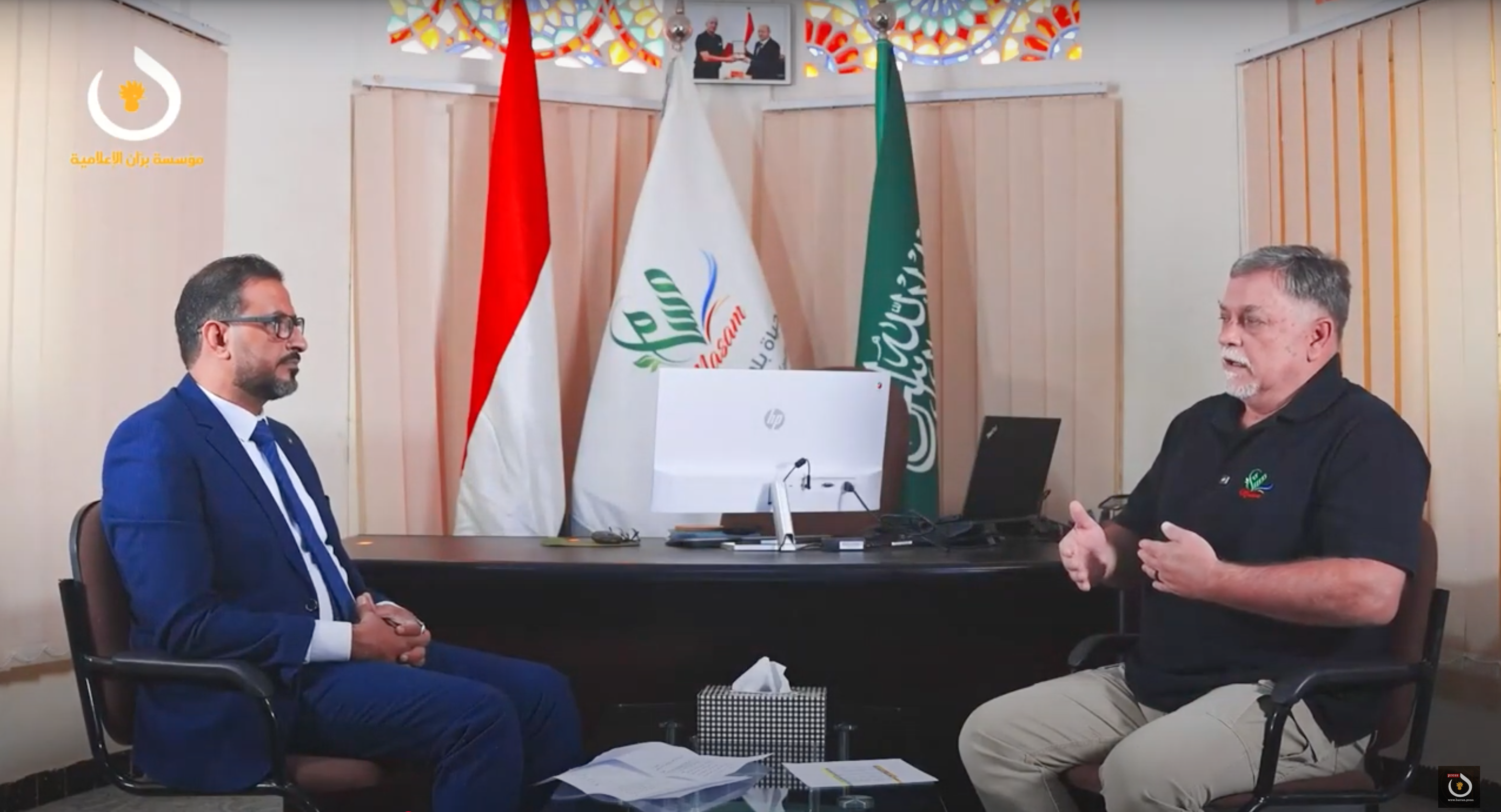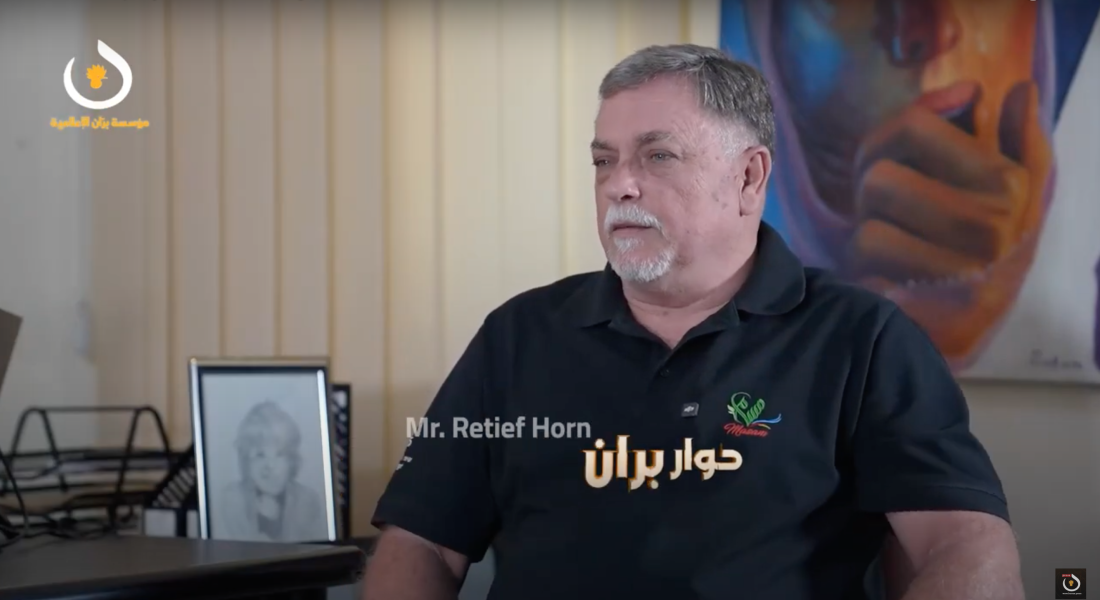Every day, new landmines and improvised explosive devices (IEDs) are planted in Yemen, as the Ansar Allah armed group (more commonly known as the Houthis) continue to produce them with no end in sight, Retief Horn, Project Masam’s Deputy Managing Director said in a TV interview with Yemeni media.
Yemen has been contaminated by landmines since the 1960s, but the start of the war in 2014 brought with it a new dimension to the humanitarian catastrophe that is gripping the country.
‘Millions’ of landmines left in Yemen
Speaking to Mohamed al-Salehi, journalist and head of the independent Yemeni news platform Barran Press, Horn explained how he estimates Yemen is one of the most contaminated countries in the world with regards to mines, unexploded ordnance (UXO) and IEDs, with the most contaminated regions being Taiz, followed by Hudaydah, Marib, Shabwah and Aden, according to Project Masam data.
“When we started Project Masam [in June 2018], it was estimated that there was roughly about two million mines in Yemen, but that number has just grown phenomenally.”
Case in fact, Horn referred to a shipment of 1.5 million detonators seized in 2021 – “so imagine how many detonators have they managed to smuggle through without being captured?”.
Every single item smuggled into Yemen has the potential to become either a mine or an IED, which means existing landmine numbers could widely diverge from previous estimates, making it hard to determine how long it would take to clear Yemen of explosive threats.
“Project Masam clearance is just a drop in the bucket, and the numbers are phenomenal. Estimates are that it could take 10 or 20 years, maybe more to clear all the existing threats… but every day there are new mines and IEDs planted. At Project Masam we do what we can, where we can work, but the Houthis just produce more and lay more on a daily basis.”
Project Masam began emergency clearance operations in mid-2018, clearing all know threat areas in and around villages to ensure community life can return to normal as well as ensure safe travel between villages by clearing roads and tracks, and access as water wells farm areas.
The mine clearance specialist explained the organisation then moved on to the second phase of its operations – namely mine clearance assistance and mine action intervention which includes Explosive Ordnance Risk Education (EORE).
“We currently have 32 operations teams working in nine provinces in collaboration with YEMAC; a wide front that the teams operate in to clear as much land and as much explosive ordnance as possible,” Horn said on the Bran’s Dialogue show. “We do not expect to increase the number of teams in the near future, purely because of the areas that can be accessed at the moment.”
‘Disregard for human life’
In the beginning of the project, Horn recounted how the demining teams found conventional mines, which are mines being used in other conflicts like the Russian TM-46, TM-47, and TM-62, but as the was went on and the clearance continued, more and more locally-manufactured mines are now being located.
“About 80 to 90 per cent of the landmines currently removed by the teams are locally-manufactured” he added.
Although the Anti-Personnel Mine Ban Convention, also known as the Ottawa Treaty, which bans the use of anti-personnel mines came into force in 1999, anti-personnel mines are still being manufactured and used on a daily basis within Yemen in a blatant disregard for human life, Horn claimed.
“Landmines and IEDs do not discriminate: they will not only catch military personnel. If civilians, children and women, and the elderly step on it or walk by it, it will maim or kill them. Because anti-personnel mines have a operating pressure of between 5kg and 10kg meaning that if a child steps on it, it will initiate and either kill or maim a child.
The mine clearance expert added: “Unfortunately, the most injuries sustained by UXOs being found is by children because they are more curious. If they find something, they want to pick it up.”
According to the deputy managing director, Project Masam are working hard to make the local population aware of the dangers of these explosive items, as well as teaching them how to prevent injuries and accidents through EORE.
Indiscriminate ‘high quality’ IEDs
But mines are not the only problem in Yemen.
“It’s the amount of IEDs and the technology being used in the IEDs. Any UXO found in the field can effectively be adapted to be an IED.”
IEDs found in Yemen can be victim-operated, or remotely initiated – they can even be initiated at a certain set time.
The first time that I physically encountered a rock mine [a form of IED] was in the early 1990s in Lebanon – and these were simple, there were no PIRs [passive infrared], it was connected to three anti-personnel landmines – but the technology currently used in-country with the manufacture of IEDs is unbelievable.”
The technology is not from Yemen.
“All the technology that they use to physically manufacture the IEDs comes from outside sources: they are well stocked and supplied to physically manufacture high-quality IEDs that are planted on a daily basis,” Horn claimed.
“We have photographic evidence of IEDs being planted in schools – a blatant disregard for basic necessities and rights that are withheld from the local population. We know when schools are contaminated, because the locals know and the children stop attending.”
In one case in November 2021, the organisation’s deminers found 11 IEDs on one circuit placed under the flooring and in the walls throughout the school in Al-Nasr School in Beit Bish village in Hudaydah governorate.
Ongoing issues for deminers
While Horn claimed Project Masam is welcomed by local communities throughout Yemen “who receive us with open arms”, issues faced by the deminers include the weather such as high wind or rain storms.
“In these conditions, deminers cannot work as they must have 100 per cent visibility at all times. If the ground is too wet, they cannot work because they might slip and fall. Another issue is the terrain; high mountainous areas, lose rocks, steep inclines, etc… All those areas need to be cleared because they would have been Houthi strongholds before they were driven back,” he explained.
“At the moment we know where the mines are, but the areas where the most amounts of landmines are located are still under Houthi control and we cannot send our teams into those areas because we would not put them in harms way at any stage. We clear where the teams are safe to move and to do clearance.”
In 2006 in southern Lebanon, where Horn first encountered rock mines, the Israeli army handed maps of minefields it had laid following its almost two-decade occupation, a move that allowed for organisations to safely make progress in mine clearance and release previously contaminated land.
Horn clarified: “Conventional mine warfare dictates that you have to proper marking – any minefield should actually be marked and it should be mapped. So if the area is taken over by other forces, those maps can be used to physically find the mines.
“In all the areas we have worked since the start of the project, we did not have any marking or mapping of the minefields; it is a clear violation of international laws. I do not think that Masam will ever receive maps to indicate exactly where minefields are located.”
Deeply ‘unconventional’ warfare
In 2021, after clearing Harib in Marib and Bayhan in Shabwah, Project Masam was close to declaring those areas “mine free”. However, Houthi forces occupied these areas again. By the time the demining teams were able to safely return to the field, they cleared more mines than previously cleared in the same spots.
“Prior to the offensive of 2021 and 2022, large parts of Marib, and Shabwah were cleared – not totally cleared. Following the Houthi offensive, we determined there were 58 target areas that Masam had cleared in the past that were then taken over by the Houthis and mined again. Once the Houthis are pushed back again, all these areas will have to be re-cleared to confirm them safe for the local population to return,” Horn told al-Salehi.
In conventional warfare, minefields have set patterns; for example three rows of mines one metre apart over a kilometre.
At the beginning of 2021 and 2022, Horn said Project Masam’s deminers found many properly-laid out minefields but with no marking.
Flash-forward to 2025, and he explained that the same demining teams are now finding that there are random mines placed in random areas, which are “not proper minefields”.
“We call them nuisance minefields, and they can place them anywhere,” Horn highlighted. “The easiest way to place them is when they see there is movement either from the local population or military personnel. In most incident cases that are reported to us, it is civilians that have been injured. For example, on high grounds, that is where the grass grows and where the farmers will send their livestock; and either the sheep herder or the livestock will step on mines so there is no regard for human life.”
Facing reality on the ground
“Our media team follows up with these victims of landmines and IEDs, and shares their stories for the international community to see, to witness what is actually going on in Yemen – namely the negligent leaving behind of harmful landmines, IEDs and UXOs by the Houthis at the moment,” the deputy managing director ventured.
“But it is not Project Masam’s media team’s responsibility to let the world know what is happening in Yemen. That is why the local media, and news agencies are just as crucial in letting the outside world know what is going on. What international media read and what they see on the ground are two different things – and their own eyes open up to see the level of destruction that is in Yemen.”
Before arriving in Yemen in 2018 to begin work with Project Masam, Horn acknowledges he did not quite know what to expect.
“I knew there were deserts, but Yemen is actually a beautiful country. However, the war has had a big impact on how Yemen is perceived by people on the outside. If you look at Aden and the West Coast, the infrastructure is there; if this war could just stop you would have many visitors flocking to Yemen. There is a cultural history in Yemen like I have not seen in any other country, and it is not utilised because of the war. When frontlines rage near sites that are thousands of years old, that is Yemen’s history being destroyed. Yemen can be so much more than it is.”
In this setting, one of Project Masam’s pillars is victim assistance. Tragically, this also applies to deminers, who laid their lives to save others. Over the last seven years, Project Masam lost 30 colleagues, “comrades and very close friends”.
“Project Masam is not unique in that way, because of the work that we do, we are putting our lives on the line on a daily basis,” he said. “That takes it out on your mental state, it has a great impact on you – and they are never forgotten – but we have to go on. We are here for a reason, doing humanitarian demining and the work needs to go on.”
Horn said he believes external influence should intervene to put a stop to Houthis’ landmine and IED warfare.
“They need to get involved to physically stop the Houthis because otherwise it will not stop. It’s been going on since 2014, with no end in sight. If no one intervenes, locals will continue getting injured and dying.”


